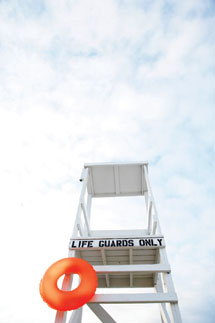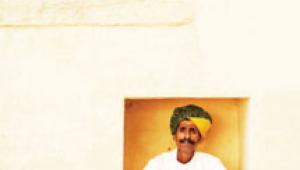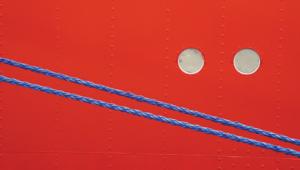Are You Talking To Me? You Already Know The Best Advice You’re Going To Get
Call it instinct or intuition, but something is telling you what pictures you should be taking. I call it the quiet little voice, and when it talks, I try to listen. The problem is, as we move on in our careers, or our hobbies, other voices take over, and we often stop listening, or listening enough, to the guiding voice that comes from within.
 |
|
 |
|
|
It's a strange paradox for a professional. The little voice that told
me what to shoot, told me what worked, often told me to just relax and have
fun is what got me to the point where other voices--of clients, agents,
editors, art directors, even members of my own staff--are now drowning
out that good advice. Listening to that small voice resulted in people wanting
to hire me and buy my photographs, so why should I stop listening now?
You may not have clients to satisfy or agents making suggestions, but I'll
bet that as you improved, you heard more voices: your buddy next door; the people
at the camera club; the relatives who were so impressed by the last photos you
showed them. So now you have something to live up to, a standard you've
set that others are judging you by. So you begin to switch from listening to
the internal voice to listening to all the people talking about what you should
be doing.
 |
 |
I don't think that success is a voice you should listen to all that
much. You'll keep duplicating what other people term "successful"
in your work. Photo contests are classic "success" voices. And today
we have all those Internet sites where photos are posted, discussed, rated,
tagged, added to favorites lists; where people tell each other how much they
love each other's photos.
Time out. Is this why you take pictures? So ibshutterfreak231 can tell you,
"Cool photo, dude!"
Well, not me, dude. I'm going back to the way it used to be. I've
laid down some rules for myself when it comes to listening to the little voice.
 |
 |
 |
|
First, just shoot it. If my impulse is to take the picture, then I take the
picture. I shoot it a lot of ways if I think that's a good idea, but I
don't question the impulse or wonder about what someone else is going
to think of the picture. I need no other reason to take a picture other than
to find out what it'll look like.
Second, I don't analyze too much. I'm through with thinking about
why I want to shoot something. The answer to that exists somewhere on the subconscious
level, and I don't worry about it. Creative analysis will come naturally;
all the rest is analysis that leads to paralysis. If I find myself thinking,
I can't really do this justice without a different lens or a better camera,
man, I'm lost.
Third, I give myself permission to be wrong or weird or offbeat or self-indulgent.
I give myself permission to be me, and to photograph like me.
Finally, I'll evaluate later. I'll make up my mind about the picture
in the editing, not the shooting. Shoot first, find out later. Did I make a
mistake? Good, I'll learn from it. If I evaluate on the spot, then I'm
not shooting, I'm evaluating. If I'm thinking more than I'm
shooting, I've got it backward.
 |
 |
The photos you see here may not be the best images I've taken recently,
but they're the photos I wanted to take. All were shot in the same way,
during a long afternoon on Cape Cod as I walked around thinking not much more
than, wow, that looks cool...man, I like the way that looks...hey, that
might work. No analysis, no laboring over the shots, just listening to the little
inner voice, pointing and shooting. The pictures here are a few of my faves,
as they might say at an Internet site.
What the voice said to me that afternoon was this: have fun. And if you're
out there having fun, experimenting, playing around, sorting out the results,
showing off the hits and losing the misses, then you know you're listening
to the right voice. You're listening to the one person who's been
there all along and whose advice guided you in the beginning. You.

















































